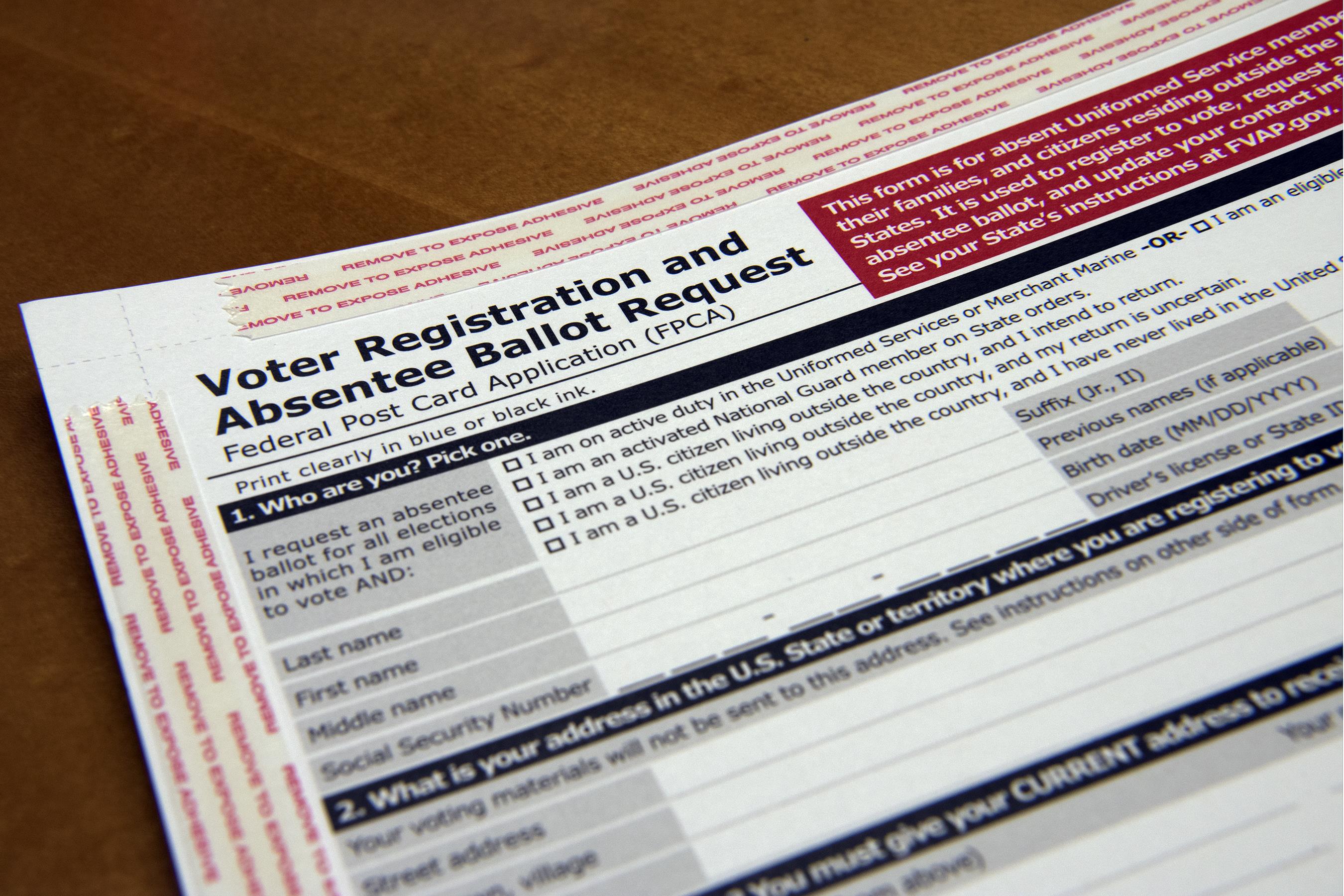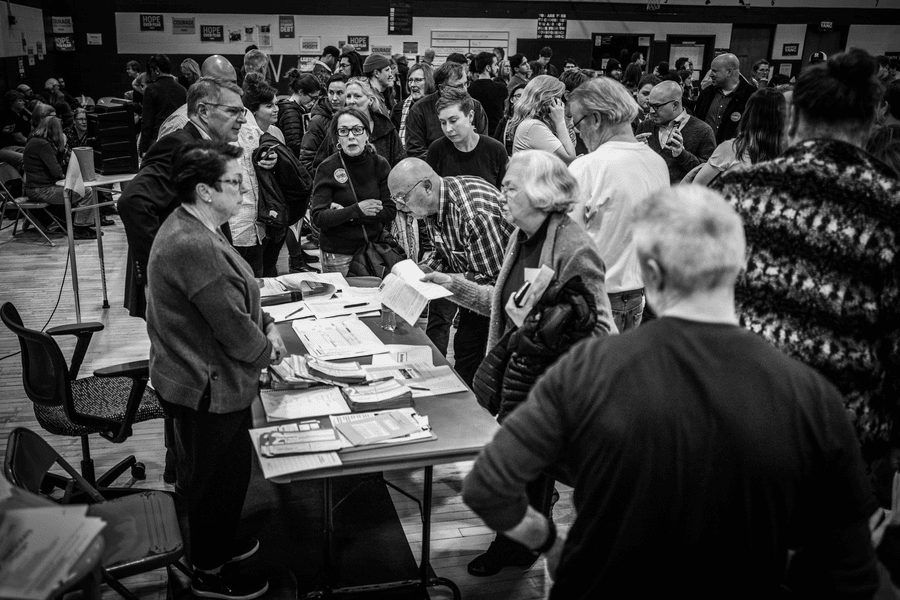Reducing One Source of a Potential Election Meltdown
The coronavirus could generate an enormous shift toward voting by mail in the 2020 general election—magnifying the risk of political chaos if the seeming “winner” on election night turns out to have lost a week or more later.

Published by The Lawfare Institute
in Cooperation With

Even before the arrival of the coronavirus, I was frequently asked what I saw as the biggest sources of a potential systemic crisis for the fall election—in particular, those risks there might still be time to mitigate. My answer has now become even more urgent, given that the pandemic might well lead many states to enact no-excuse absentee balloting (what some call “vote by mail”) or for Congress to do so for the entire country.
One of the biggest risks arises from a new phenomenon: a very large number of ballots now do not arrive or are not counted until well after Election Day. If the country shifts to no-excuse absentee voting nationwide, the number of these late-arriving, late-counted ballots will go through the roof. This creates the prospect that one or more battleground states might flip from an apparent “victory” for one side on election night to a victory for the other by the time the official vote canvass is completed. In the current hyperpolarized and social-media-saturated age, with many on both sides believing politics are now existential, it is easy to envision inflamed passions about “rigged elections” quickly burning out of control (even more so if the results diverge from a preelection polling “consensus”). The states can do a number of things to reduce these risks, including permitting mailed-in ballots to be processed (but not counted) before Election Day and taking steps to reduce the number of mailed-in ballots that do not arrive until after Election Day.
All this was true before the virus arrived, but if it is still a significant threat in the fall, that will pose a significant challenge to traditional in-person voting. Many voters might understandably not want to risk their health by coming to crowded polling places; finding poll workers to staff the polls might also become a challenge. Already Democratic primaries have been postponed in many states, but the same cannot be done for the general election. Given this prospect, a bill about to be introduced in Congress by Sens. Amy Klobuchar and Ron Wyden proposes mandating that states permit every registered voter to vote through an absentee ballot, which can be mailed in. Even if Congress does not pass this legislation, many states might adopt this option on their own.
On top of the challenge posed by large numbers of late-counted ballots, these late-arriving ballots have tended since the early 2000s to systematically favor Democrats, in what election-law scholars have called “the blue shift.” (Perhaps a nationwide shift to no-excuse absentee balloting would end this blue shift or bring about a red shift, but there is no way of knowing.) This is exactly what happened in the Arizona Senate race in 2018, in which the Democrat, Kyrsten Sinema, was reported behind on election night but was ultimately certified the winner.
But partisan control of the Senate did not turn on that Arizona seat. If the presidential election this fall is close, with the margin of victory turning on a couple of close states, it is not hard to imagine President Trump seemingly pulling ahead on election night and in the important next-day coverage but then falling behind over the next week or more as those decisive states shift to the Democratic column when the full canvass of votes becomes complete. And it does not take a fertile imagination to picture what would then erupt in the courts, on social media and maybe in the streets. The same is true if a red shift turns a seeming victory for (presumptive) Democratic nominee Joe Biden into a second term for Trump.
The idea of a presidential election flipping in this way is not at all far-fetched. In 2016, Hillary Clinton won New Hampshire by fewer than 3,000 votes; Maine, by 23,000; Nevada, by 27,000. Donald Trump won Wisconsin, Michigan, and Pennsylvania by around 22,000 votes, 11,000 votes, and 45,000 votes, respectively. Now consider that, in 2012, Barack Obama gained an average of more than 37,000 votes in the battleground states between the morning after the election and the completion of the full canvass. In other words, the average blue shift in battleground states in 2012 was larger than the margin of victory in many key states in 2016—meaning that a similar shift could turn the leader on election night and in the critical first days after into the loser many days later. Overall, Hillary Clinton had about 230,000 more votes than Donald Trump the day after the 2016 election, but that lead grew to a nearly 3 million margin when the count was officially complete. The size of these shifts is much larger than typical before the 2000s—and with nationwide no-excuse absentee voting on the horizon for 2020, a quantum leap in the magnitude of these shifts is virtually inevitable.
Moreover, recent experience in the primaries with new systems of no-excuse absentee voting—in states with plenty of advance time to implement them—illustrates the difficulty of processing these ballots quickly. Sixteen days after the California primary, San Francisco appears still to have 25 percent of the ballots cast there to count (although most other counties have updated their counts in the last several days, San Francisco has not since March 4). In Michigan, which implemented no-excuse absentee voting for the first time this year, a recent story details the difficulty Detroit is having processing those ballots.
The good news is that the country can still take measures that can minimize the scale of this risk associated with a sudden shift to no-excuse absentee voting and assist in ensuring a stable, widely accepted election outcome.
Two policy changes in recent years, designed to make voting more convenient or to protect the right to vote, account for the recent rise in the number of late-counted ballots: the dramatic increase in no-excuse absentee and mail-in voting, and the rise in provisional ballots as a result of the Help America Vote Act of 2002 (which has also had the perverse effect of encouraging election officials to keep the lines moving by pushing voters with registration issues into using provisional ballots). Provisional ballots are not cast until Election Day, with issues about eligibility resolved after that; so, by definition, these ballots cannot be counted until after Election Day. States have more flexibility when dealing with mailed-in ballots, and most states treat such ballots as valid votes if postmarked on or before Election Day—which means many do not arrive until after Election Day. Even those that arrive before are often not processed and counted until the canvass takes place.
As more awareness about post-election night shifts has spread, experts have started preaching to the media that it needs to better educate voters not to expect a “winner” to be known on election night or even in the next several days. These efforts are all well and good, but they do not address the direction from which the threat of crisis would arise. Even if most major media will overcome the incentives and competitive pressures to declare one candidate a presumptive winner, there is another, deeper issue: In a hyperpolarized era, when the presidential election seems an existential matter to many, the losing candidate and his supporters could inflame the country with narratives of a stolen election.
Given the reality of American political culture in our era, I fear that preaching patience will be about as effective as preaching abstinence. In addition, Americans should consider two legislative or administrative measures, at least for presidential elections, that enable absentee and mail-in ballots to be counted on Election Day or much closer to it than many states currently do. The idea is to reduce the gap between the election night count and the final count—and, in turn, reduce the risk of the perceived legitimacy of the election spinning out of control.
The first measure should be easy to adopt, yet many critical states have not done so. For absentee or mail-in ballots that arrive before Election Day, states should require the processing of these ballots before the polls close—determining whether the ballots are valid, then opening them and feeding them into scanners, without tabulating the count. The states would then be set up to immediately tabulate these ballots on Election Day and include those numbers in the count released after polls close. Some states sensibly do this already. In California, for example, processing these ballots begins up to 20 days before the election; the counting begins up to 10 days before in some jurisdictions or at 5 p.m. the day before the election in other jurisdictions.
But in several critical, large states—which already faced significant numbers of mailed-in ballots, even before the arrival of the virus—laws prohibit even starting to process these ballots before Election Day. Michigan started using no-excuse absentee voting for the first time in 2020; in the primaries, more than 800,000 absentee ballots were cast—and state law prohibited starting to process these ballots until Election Day.The Michigan secretary of state is begging the legislature to change this, and bills have been introduced to do so—but for reasons I cannot comprehend, the Senate majority leader opposes the legislation and it appears unlikely to reach the floor. In another critical state, Pennsylvania, legislators are starting to debate permitting mailed-in ballots to be processed before Election Day, but legislation to make this change has yet to be enacted. North Carolina, another potential swing state, also does not permit processing these ballots until late on Election Day or even until the polls close.
That’s a mistake in the current climate. Unlike many election-law issues, this one should be easy to fix. Permitting the processing of these ballots before Election Day favors neither party. And doing so would go a long way toward reducing the number of ballots that are not counted until after Election Day. In addition, some states prohibit the return of absentee ballots to polling places or even in-person at all. Those laws should also be changed and doing so should not be controversial. Voters should have the option of returning ballots to polling places, or at the very least, to the relevant election administrative body. That would also reduce the number of ballots that can’t be counted until after Election Day.
The second measure moves into more controversial terrain. I’ll present the suggestion in a softer and a stricter form. Many states treat absentee ballots as valid if they are postmarked (or barcoded) on or before Election Day; this means that states will not be able to begin the processing, let alone the counting, of these ballots until several days after the election. Some states modify this a bit by requiring that the ballots arrive by a set time on Election Day. In the softer form of the proposal, to reduce the number of late-arriving ballots, states and the political parties should make major efforts to encourage voters to send in their absentee ballots well before Election Day, rather than at the last minute. There can be no objection to that.
The stricter form would be to require that mail-in ballots for the presidential election be postmarked (or barcoded) not by the time polls close on Election Day, but three or four days before then. This would be analogous to early voting, another means to make voting more convenient, which typically shuts down a day or more before Election Day to enable smooth administration of the election. The date should be tied to postmarking, rather than date of receipt, to avoid the vagaries of the U.S. Postal Service. I understand the reasons to resist such a policy: Some voters might not get around to focusing on voting until the day of the election. For those who wake up on Election Day and realize they have not cast their absentee ballot, the option of voting in-person would still be there. But in a presidential election, the political parties and others mobilize enormous resources to make sure voters know the rules; in my work with presidential campaigns, the field operators frequently told us that they could work with most rules as long as the rules were clear. If the law is clear that absentee ballots must be postmarked no later than the Saturday before the election, the vast majority of voters will do that—and will vote in person if they don’t.
The Klobuchar-Wyden bill, designed to secure the fall election in the face of the virus, mandates that all states must accept absentee ballots if postmarked as late as poll closing on Election Day. In normal times, that might be fine, perhaps even good policy. But these are not normal times. Policy should encourage voters to get ballots in before the last minute, in order to reduce the prospect of post-election night changes to the outcome. The bill could set an earlier postmark date as a floor and still permit states, if they choose, to use a later date.
In recent years, many states have adopted a number of measures to make voting more convenient. With the coronavirus, they are likely to adopt even more. At some point, however, the admirable aims of those measures bump up against the important value of ensuring that elections are broadly perceived as legitimate, fair and uncorrupted.
There are still easy steps to take that reduce the risk of an election that sits unresolved for more than a week, or that involves a blue or red shift that appears to change the outcome. Other steps involve trade-offs. From the vantage point of 2020, the disputed 2000 Bush-Gore election looks like a time of innocence. Given the current political moment, it’s necessary to consider what trade-offs are appropriate to reduce the magnitude of a blue or red shift that would almost certainly destabilize the legitimacy of the election.



.jpg?sfvrsn=d8787e74_5)

